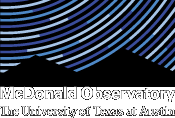UT Astronomer Finds Smallest Brown Dwarfs Yet
The Flame Nebula, located about 1,400 light-years away from Earth, is a hotbed of star formation less than 1 million years old. Within it, there are objects so small that their cores will never be able to fuse hydrogen like full-fledged stars — brown dwarfs. Astronomers have long debated how small brown dwarfs can be. Now, a new study sheds light on this question by finding the lowest mass brown dwarfs yet.

